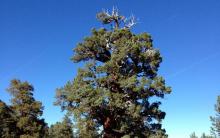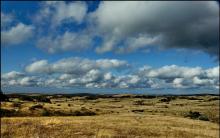Astronomers have been studying asteroids for a long time, but the world community became interested in them only 10 years ago, after the media reported the risk of a collision with the celestial body Apophis. This catastrophe would be the death of a quarter of the world's population. Later, when scientists recalculated the asteroid’s trajectory, the panic passed, but interest in celestial pebbles and astronomy remained. Which asteroids are the most “noticeable”?
The size of this asteroid reaches almost 950 kilometers. The discovery of this celestial body occurred in 1801, and since then it has not been named. At first it was a full-fledged planet, then an asteroid, and in 2006 it was recognized as a dwarf planet, since Ceres is the most powerful object in the asteroid belt. Ceres appears to be a sphere, which is a bit surprising for an asteroid, and its rocky core and crust are made of minerals and frozen water. Earthlings need not be afraid of a collision with Ceres in the coming millennia, since the point of its orbit is as much as 263 million kilometers away from Earth.

It also boasts of its size – 532 kilometers. Pallas is also part of the asteroid belt, and there are high hopes for it because of the silicon in which it is rich. Perhaps someday Pallas will be a valuable source of silicon for us.

The diameter of this asteroid is 530 kilometers. But, even with its smaller size, Vesta has the lead in the “heavy weight”. The core of the asteroid is heavy metal, and the crust is rock. Because of its differences, Vesta is capable of reflecting four times more sunlight than other asteroids. It is because of this that it can sometimes be seen from Earth. This event occurs once every three to four years.

This asteroid cannot be called small, its diameter is about 400 kilometers. But Hygiea is very dim, so it was discovered later than its colleagues. Hygea is absolutely typical of the most common type of asteroid and has carbonaceous content. When Hygeia is closest to planet Earth, it can be seen with binoculars.

An asteroid with a diameter of 326 kilometers, although considered quite large, is still a little-studied celestial object to this day. And the reason is that Interamnia is a celestial body of a rare spectral class F. Modern scientists still have not figured out what astronomical objects of this class consist of, and are also in the dark about their internal structure. What can I say, even the form of Interamnia still remains a mystery! Here is such a little-known celestial object.

This asteroid was discovered a long time ago; more than one hundred and fifty years have passed since then. Its diameter is about 302 kilometers. Europa is distinguished by its elongated orbit, which is why the distance from the asteroid to the Sun fluctuates all the time. If life existed on Europa, it would be inhabited by mutants with increased adaptability. Europa's density is almost the same as water, so the surface of the asteroid is porous. Imagine a flying pumice stone spinning in the Great Asteroid Ring.

The diameter of this celestial object is estimated differently; it ranges from 270-326 kilometers. Davida owes its name to its discoverer, Raymond Dugan, who dedicated the asteroid to astronomy professor David Todd. Subsequently, “David” was changed into a female name, since at that time it was customary to give only female names to celestial bodies, and they tried to take them from Greek mythology.

A celestial body with a diameter of 232 kilometers. Silvia, like Europa, is porous, but for different reasons. The asteroid is made of rubble, held together only by gravity. Sylvia is also famous for being the first triple asteroid to have as many as two moons.

An amazing asteroid that looks like either peanuts or dumbbells. Thanks to its strange shape, it has caused controversy about its origin; some consider it man-made, while other scientists prove its natural origin. Hector has his own, as yet unnamed, moon. Hector is also interesting because of its origin, it contains rocks and ice. This composition is found among asteroids in the Kuiper belt, which means that Hector came from there.

A celestial body with a diameter of 248-270 kilometers rotates very quickly. Its density is very high, but scientists explain this by the “largeness” of Euphrosyne. By the way, asteroids never cease to amaze the public! Quite recently, the celestial body UW-158 passed at a distance of 2.4 million kilometers from our planet. Surprisingly, its core contains almost 100 million tons of platinum! It’s even a little sad that such wealth literally floated away from us!











The most beautiful motorcycles in the world
Which sea is the cleanest in the world?
Top 10 Most Expensive Furs
The largest and most luxurious casinos in the world
Knightly orders of Europe XI - XIII centuries